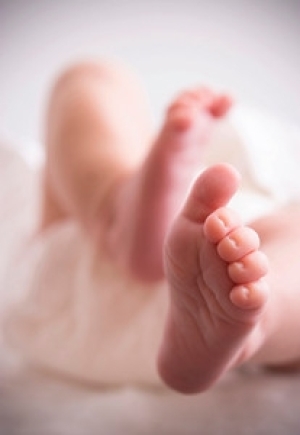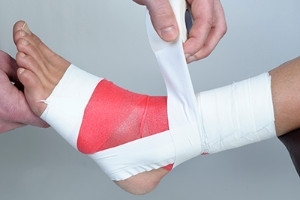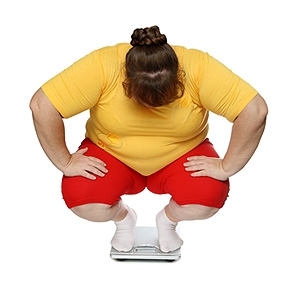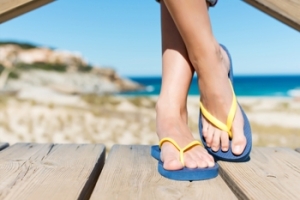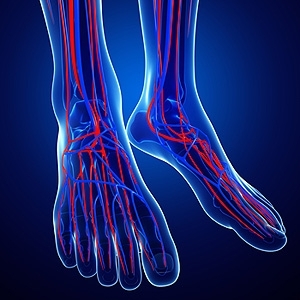Super User
Wounds That Don't Heal Need to Be Checked
Successful Ways to Properly Care for Children's Feet
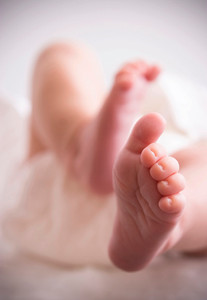 When children’s feet are properly cared for, specific foot problems may be avoided as they get older. One of the first things parents can do for their children is to wash and dry their feet daily, especially between the toes. It is encouraged for toddlers to walk barefoot while indoors, and this may be helpful in strengthening the overall foot as the toes grasp the floor. When children are walking outdoors, it is beneficial to have your child’s feet measured, as this can help in determining that the correct size shoes are purchased. It is important that the toes have adequate room to move freely in, and socks should be made of breathable materials. Additionally, trimming your child’s toenails correctly may prevent ingrown toenails. If you would like more information about how to take care of children's feet, it is suggested that you speak to a podiatrist.
When children’s feet are properly cared for, specific foot problems may be avoided as they get older. One of the first things parents can do for their children is to wash and dry their feet daily, especially between the toes. It is encouraged for toddlers to walk barefoot while indoors, and this may be helpful in strengthening the overall foot as the toes grasp the floor. When children are walking outdoors, it is beneficial to have your child’s feet measured, as this can help in determining that the correct size shoes are purchased. It is important that the toes have adequate room to move freely in, and socks should be made of breathable materials. Additionally, trimming your child’s toenails correctly may prevent ingrown toenails. If you would like more information about how to take care of children's feet, it is suggested that you speak to a podiatrist.
The health of a child’s feet is vital to their overall well-being. If you have any questions regarding foot health, contact one of our podiatrists of Carolina Foot & Ankle. Our doctors can provide the care you need to keep you pain-free and on your feet.
Tips for Keeping Children's Feet Healthy
- Make sure their shoes fit properly
- Look for any signs of in-toeing or out-toeing
- Check to see if they have Clubfoot (condition that affects your child’s foot and ankle, twisting the heel and toes inward) which is one of the most common nonmajor birth defects.
- Lightly cover your baby’s feet (Tight covers may keep your baby from moving their feet freely, and could prevent normal development)
- Allow your toddler to go shoeless (Shoes can be restricting for a young child’s foot)
- Cut toenails straight across to avoid ingrown toenails
- Keep your child’s foot clean and dry
- Cover cuts and scrapes. Wash any scratches with soap and water and cover them with a bandage until they’ve healed.
If you have any questions, please feel free to contact one of our offices located in Huntersville Office | 16419 Northcross Dr Suite A, Huntersville, NC 28078; Mooresvillle Office | 206 Joe Knox Avenue Suite D, Mooresville, NC 28117; and Mountain Island | 10310 Couloak Drive Suite 200, Charlotte, NC 28216 . We offer the newest diagnostic and treatment technologies for all your foot care needs.
How to Care for Your Child's Feet
It is never normal for a child to experience pain in his or her feet. Foot pain that lasts more than a few days and limits a child’s ability to walk should be examined by a podiatrist. Many adult foot ailments originate in childhood and may be present at birth. Common foot issues that are experienced by children are pediatric flat foot, Sever’s disease, ingrown toenails, and plantar warts.
A child’s foot grows rapidly during the first year, allowing it to reach almost half of their adult foot size. Consequently, foot specialists consider the first year to be the most crucial point in the foot development process. There are ways you can help ensure that your child’s foot develops properly. One way is to carefully look at your baby’s feet. If you notice any deformities, you should immediately seek professional care. You should also loosely cover your child’s foot, since tight coverings may prevent movement and inhibit normal development. Another tip is to change the baby’s positioning throughout the day. If your baby lies down in one spot for too long, it may put an excess amount of strain on the feet and legs.
It is best that you try not to force a child to start walking. Children will begin to walk when they are both physically and emotionally capable to do so. You should also avoid comparing your child’s walking progress with other children because the age range for independent walking may range. When your child’s feet begin to develop, you may need to change both their shoe and sock size every few months to allow room for their feet to grow.
Kids are sometimes prone to splinters, cuts, and severe injuries because they tend to walk around barefoot. This also makes them more susceptible to developing plantar warts which is a condition caused by a virus that invades the sole of the foot through breaks in the skin. These ailments can be avoided by making sure your child wears shoes in unsanitary environments. You should also wash any minor cuts or scrapes on your child’s feet. It is a myth that exposure to fresh air will heal injuries; fresh air will only expose your child’s cuts to germs.
As a parent, you should ensure that your child’s feet are developing properly and are being properly maintained. Consequently, it is important that you perform routine inspections on his or her feet to detect any injuries or deformities in their early stages. Early detection and treatment will help to ensure that your child does not develop any serious foot conditions.
Causes of Ankle Pain and Treatment Options
There can be many diffe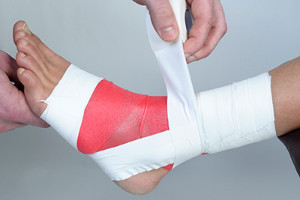 rent causes of ankle pain, ranging from an ankle sprain or fracture to chronic conditions such as arthritis. The degree of the ankle pain can vary and it can come on suddenly or slowly over time. The ankle joint consists of bones, muscles, cartilage, and tissues called ligaments and tendons. Any injury or disease that were to affect these structures, could very well lead to ankle pain. Some causes of ankle pain include sprains, tendonitis, arthritis and a bruise or break of the bone. It is important to know that you should visit a doctor if there is an inability to bend the ankle, swelling of the joint, signs of an infection, an inability to walk comfortably on the affected side and if you have ankle pain that occurs at night or while resting. Ankle pain can be diagnosed with an X-ray, medical exam or thorough physical examination. The RICE protocol is a 4-step process in which you may be able to treat your injury from the comfort of your own home. The first step is to rest. This will allow for the joint to relax and for any inflammation to subside. The next step is to ice. Ice should be applied at least 3 times a day for 15 to 20 minutes. This will allow for any swelling to go down and it will also soothe the pain. The third step is to add compression. Compression bandages, such as an ACE wrap will help support and immobilize the ankle joint. Be sure not to add too much compression as this can lead to numbness, tingling and swelling at the site of the pain. The final step is to elevate the ankle. Raising the ankle above the level of the heart, by way of propping your foot up on pillows, will help reduce any swelling for the first couple days after the injury has occurred. If you are suffering from any ankle pain, visit your podiatrist to see what treatment may be right for you.
rent causes of ankle pain, ranging from an ankle sprain or fracture to chronic conditions such as arthritis. The degree of the ankle pain can vary and it can come on suddenly or slowly over time. The ankle joint consists of bones, muscles, cartilage, and tissues called ligaments and tendons. Any injury or disease that were to affect these structures, could very well lead to ankle pain. Some causes of ankle pain include sprains, tendonitis, arthritis and a bruise or break of the bone. It is important to know that you should visit a doctor if there is an inability to bend the ankle, swelling of the joint, signs of an infection, an inability to walk comfortably on the affected side and if you have ankle pain that occurs at night or while resting. Ankle pain can be diagnosed with an X-ray, medical exam or thorough physical examination. The RICE protocol is a 4-step process in which you may be able to treat your injury from the comfort of your own home. The first step is to rest. This will allow for the joint to relax and for any inflammation to subside. The next step is to ice. Ice should be applied at least 3 times a day for 15 to 20 minutes. This will allow for any swelling to go down and it will also soothe the pain. The third step is to add compression. Compression bandages, such as an ACE wrap will help support and immobilize the ankle joint. Be sure not to add too much compression as this can lead to numbness, tingling and swelling at the site of the pain. The final step is to elevate the ankle. Raising the ankle above the level of the heart, by way of propping your foot up on pillows, will help reduce any swelling for the first couple days after the injury has occurred. If you are suffering from any ankle pain, visit your podiatrist to see what treatment may be right for you.
Ankle Pain
Ankle pain can often occur due to a number of conditions including ankle fracture, arthritis, instability, tendonitis, and gout. Symptoms that accompany ankle pain may include swelling, stiffness, redness, and warmth in the affected area. Pain associated with the ankle is typically described as a dull and intense ache that is felt during ankle motion or when bearing weight.
While ankle pain treatment can vary depending on what the condition is and how severe it is, initial treatment often involves rest, ice, elevation, and immobilization. Nonsteroidal anti-inflammatory drugs (NSAIDs) such as ibuprofen may also be prescribed. Other possible treatments include physical therapy and cortisone injection. Your podiatrist can determine the method of treatment that is most appropriate for you and your condition.
Being Overweight Can Hurt Your Feet
 Since your feet feel the pressure of most of your body weight, being overweight can cause a variety of foot problems. Extra weight tends to bring the knees together, putting stress on the insides of the feet and arches. There are also several specific conditions that are known to be affiliated with additional weight. Gout causes severe pain in the big toe. It begins with an accumulation of uric acid in the body, which is more common for overweight individuals. You are also more likely to develop diabetes, which reduces blood flow to the feet. When you accumulate too much plaque in the arteries, you could develop peripheral arterial disease, which reduces blood flow to the feet as well. Losing weight is a practical way to avoid foot and ankle complications. If you feel that your weight may be affecting your feet, it is recommended that you consult with a podiatrist.
Since your feet feel the pressure of most of your body weight, being overweight can cause a variety of foot problems. Extra weight tends to bring the knees together, putting stress on the insides of the feet and arches. There are also several specific conditions that are known to be affiliated with additional weight. Gout causes severe pain in the big toe. It begins with an accumulation of uric acid in the body, which is more common for overweight individuals. You are also more likely to develop diabetes, which reduces blood flow to the feet. When you accumulate too much plaque in the arteries, you could develop peripheral arterial disease, which reduces blood flow to the feet as well. Losing weight is a practical way to avoid foot and ankle complications. If you feel that your weight may be affecting your feet, it is recommended that you consult with a podiatrist.
Obesity has become very problematic at this point in time and can have extremely negative effects on the feet. If you’re an obese individual and are concerned about your feet, contact one of our podiatrists from Carolina Foot & Ankle. Our doctors can provide the care you need to keep you pain-free and on your feet.
Obesity and Your Feet
Since your feet are what support your entire weight when standing, any additional weight can result in pain and swelling. Being overweight is one of the main contributors to foot complications.
Problems & Complications
Extra Weight – Even putting on just a few extra pounds could create serious complications for your feet. As your weight increases, your balance and body will shift, creating new stresses on your feet. This uneven weight distribution can cause pain, even while doing the simplest tasks, such as walking.
Diabetes – People who are overweight are at serious risk of developing type-2 diabetes, which has a drastic impact on the health of your feet. As you get older, your diabetes might worsen, which could lead to loss of feeling in your feet, sores, and bruises. You could also become more prone to various infections.
Plantar fasciitis – Pressure and stress that is placed on muscles, joints, and tendons can trigger plantar fasciitis, which is an inflammation of tissue that forms along the bottom of the foot.
If you have any questions please feel free to contact one of our offices located in Huntersville Office | 16419 Northcross Dr Suite A, Huntersville, NC 28078; Mooresvillle Office | 206 Joe Knox Avenue Suite D, Mooresville, NC 28117; and Mountain Island | 10310 Couloak Drive Suite 200, Charlotte, NC 28216 . We offer the newest diagnostic and treatment technologies for all your foot and ankle needs.
Obesity and the Feet
Obesity is a common problem in American society. Approximately one third of the U.S. population is obese. Obesity is defined as a body mass index greater than 30. Obesity has the power to affect different aspects of the body, and one of the most common problems it causes is foot pain. There have been many studies that found a connection between an increased BMI and foot problems. A simple activity such as walking up a flight of stairs can increase pressure on the ankle by four to six times.
Being overweight causes the body to compensate for the extra weight by changing the way it moves. Consequently, people who struggle with obesity commonly have arch problems in their feet. Obesity causes the arch to break by stretching the ligaments and tendons that hold the bones in the foot together. When the arch lowers, the foot may eventually fall flat. Collapsed foot arches fail to provide adequate shock absorption which eventually leads to foot pain. Other conditions that may be caused by flat feet are pronation, plantar fasciitis, weak ankles, and shin splints.
Foot problems that are caused by obesity may be treated by wearing proper footwear. Proper shoes will allow your feet to have better circulation around the arch and ankle. Additionally, those with obesity often discover that typical heel pain remedies are not effective for them. They will find that their plantar fascia is easily injured, and it is often inflamed. The best way to treat this problem is to implement lifestyle changes. A few good ways to improve your diet are to reduce calories, fill up on fruits and veggies, and to limit sugars.
Custom foot orthotics can prevent foot problems if you’re carrying excess weight or are trying to lose weight. The purpose of orthotics is to provide shock absorption to decrease the amount of stress on the joints to prevent arthritis.
Woes for Your Toes from Flip-Flops
Flip-flops are fun to wear wh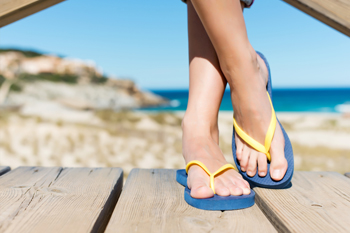 en lounging out by the pool or when going to the beach. At the same time, they could be causing major stress and injury to the feet. Without any protective outer covering on your flip-flops, it can be easy for the feet to get cut or bruised. Also, due to the feet not being protected by socks in flip-flops, the skin on the feet is more prone to sunburn, as well as blisters from rubbing against the thong of the flip-flop. Flip-flops may seem easier to slip on than shoes, but this isn’t actually the case. The feet work a lot harder in order to keep the flip-flops on. This causes the toes to involuntarily curl up and the muscles on the feet to strain which can lead to bunions or hammertoes. In addition, the base of the flip-flop that is meant to support the foot isn’t doing that at all and instead is overworking the foot’s tendons and ligaments. This can cause overuse injuries such as shin splints, tendonitis and plantar fasciitis. Activities that aren’t meant to be done in flip-flops include hiking, biking, working with tools and sporting activities. Consult a podiatrist to get a better idea of when you should wear flip-flops.
en lounging out by the pool or when going to the beach. At the same time, they could be causing major stress and injury to the feet. Without any protective outer covering on your flip-flops, it can be easy for the feet to get cut or bruised. Also, due to the feet not being protected by socks in flip-flops, the skin on the feet is more prone to sunburn, as well as blisters from rubbing against the thong of the flip-flop. Flip-flops may seem easier to slip on than shoes, but this isn’t actually the case. The feet work a lot harder in order to keep the flip-flops on. This causes the toes to involuntarily curl up and the muscles on the feet to strain which can lead to bunions or hammertoes. In addition, the base of the flip-flop that is meant to support the foot isn’t doing that at all and instead is overworking the foot’s tendons and ligaments. This can cause overuse injuries such as shin splints, tendonitis and plantar fasciitis. Activities that aren’t meant to be done in flip-flops include hiking, biking, working with tools and sporting activities. Consult a podiatrist to get a better idea of when you should wear flip-flops.
Flip-flops are not always the best choice of footwear. If you have any concerns about your feet or ankles, contact one of our podiatrists from Carolina Foot & Ankle. Our doctors will assist you with all of your foot and ankle needs.
Flip-Flops and Feet
When the weather starts warming up, people enjoy wearing flip-flops. Flip-flops are comfortable, stylish, and easy to slip on and off; they're perfect for any summer beach goer. However, these shoes can cause harm to the feet.
How Can Flip-Flops Affect Me Long-Term?
- Ankle problems
- Hip problems
- Lower back problems
- Pain in the balls of the feet
- Problems with foot arches
- Changes in the way you walk
Are There Injuries Associated with Flip-Flops?
Yes. Since flip-flops are relatively weak and do not provide the same amount of support as sneakers, people who wear flip-flops regularly are more susceptible to injuries. On top of that, the open nature of the shoe makes your feet more prone to other problems, such as cuts and even infections. Common injuries and ailments include:
- Sprained ankles
- Blisters
- Infections
- Cuts and Scrapes
I like Wearing Flip-Flops. Are There Safe Alternatives?
When buying flip-flops, try to find ones that have sturdy soles and that are made of high-quality materials that will support for your feet. These flip-flops will cost more but will also last longer as a result.
If you have any questions please feel free to contact one of our offices located in Huntersville Office | 16419 Northcross Dr Suite A, Huntersville, NC 28078; Mooresvillle Office | 206 Joe Knox Avenue Suite D, Mooresville, NC 28117; and Mountain Island | 10310 Couloak Drive Suite 200, Charlotte, NC 28216 . We offer the newest diagnostic and treatment technologies for all your foot and ankle needs.
Flip Flops and Feet
Flip flops are often a popular choice of footwear for many people. Flip flops allow your feet to breathe and give your toes the freedom of movement. They are easy to slip on and can be worn with virtually any style of clothing. Flip flops, however, despite their many benefits, can be detrimental for your foot health.
Despite their comfortableness, frequently wearing flip flops can create problems in the lower body over time. Issues mainly stem from the fact that people walk differently in flip flops compared to other footwear, such as sneakers. This is due to a change in one’s natural gait, which therefore creates stress in different parts of the body while hindering the body’s natural posture. Problems can also arise in the arches and balls of the feet. Flip flops provide little to no support to these areas.
Aside from long-term problems, flip-fops can also create short-term issues as well, such as ankle sprains and blisters. Weak materials that are flexible and bendable are generally used to manufacture flip flops. These materials make its wearers prone to both tripping and injuring their ankles. Flip flops can create blisters as the material rubs against the foot. People are much more at risk for infection while wearing flip flops due to their openness. This also makes it easier to scrape and cut the foot since there is a lack of protection. If these cuts are left untreated and uncovered, the risk then becomes greater.
To prevent the aforementioned occurrences, purchase a pair of flip flops that offer significant protection. The soles of the flip flops should not be floppy, but sturdy and firm, and should not significantly bend or wiggle when lifted from the floor. Flip flops made of high-quality materials will not be affected by this problem. While higher quality flip flops may be more expensive, they will last longer and provide better protection compared to a cheaper pair. Brand name flip flops sold from a quality manufacturer are a dependable option.
There is no problem in wearing your favorite pair of flip flops so as long as you do not wear them daily or for extended periods of time. Flip flops should be replaced every 3-4 months to ensure that they provide your feet with the best protection.
Existing Medical Conditions May Lead to Poor Circulation
 Poor circulation is a common ailment among a variety of people. Existing medical conditions that include diabetes, atherosclerosis, and Raynaud’s disease may be a cause of this condition. Additionally, people who are overweight or frequently smoke may find poor circulation has developed. Some of the symptoms that are associated with this ailment may include tingling and a loss of sensation in the feet, coldness in the extremities, and the feet may appear swollen. If you are experiencing any of these symptoms, a proper diagnosis is typically performed before starting a treatment regime. This generally consists of a blood sugar test being administered for diabetes, and an ultrasound or cat scan may be necessary to determine if there are existing blood clots. It is suggested to consult with a podiatrist if you think your feet are affected by poor circulation.
Poor circulation is a common ailment among a variety of people. Existing medical conditions that include diabetes, atherosclerosis, and Raynaud’s disease may be a cause of this condition. Additionally, people who are overweight or frequently smoke may find poor circulation has developed. Some of the symptoms that are associated with this ailment may include tingling and a loss of sensation in the feet, coldness in the extremities, and the feet may appear swollen. If you are experiencing any of these symptoms, a proper diagnosis is typically performed before starting a treatment regime. This generally consists of a blood sugar test being administered for diabetes, and an ultrasound or cat scan may be necessary to determine if there are existing blood clots. It is suggested to consult with a podiatrist if you think your feet are affected by poor circulation.
Poor circulation is a serious condition and needs immediate medical attention. If you have any concerns with poor circulation in your feet contact one of our podiatrists of Carolina Foot & Ankle. Our doctors will treat your foot and ankle needs.
Poor Circulation in the Feet
Poor blood circulation in the feet and legs is can be caused by peripheral artery disease (PAD), which is the result of a buildup of plaque in the arteries.
Plaque buildup or atherosclerosis results from excess calcium and cholesterol in the bloodstream. This can restrict the amount of blood which can flow through the arteries. Poor blood circulation in the feet and legs are sometimes caused by inflammation in the blood vessels, known as vasculitis.
Causes
Lack of oxygen and oxygen from poor blood circulation restricts muscle growth and development. It can also cause:
- Muscle pain, stiffness, or weakness
- Numbness or cramping in the legs
- Skin discoloration
- Slower nail & hair growth
- Erectile dysfunction
Those who have diabetes or smoke are at greatest risk for poor circulation, as are those who are over 50. If you have poor circulation in the feet and legs it may be caused by PAD and is important to make changes to your lifestyle in order to reduce risk of getting a heart attack or stroke. Exercise and maintaining a healthy lifestyle will dramatically improve conditions.
As always, see a podiatrist as he or she will assist in finding a regimen that suits you. A podiatrist can also prescribe you any needed medication.
If you have any questions please feel free to contact one of our offices located in Huntersville Office | 16419 Northcross Dr Suite A, Huntersville, NC 28078; Mooresvillle Office | 206 Joe Knox Avenue Suite D, Mooresville, NC 28117; and Mountain Island | 10310 Couloak Drive Suite 200, Charlotte, NC 28216 . We offer the newest diagnostic and treatment technologies for all your foot and ankle needs.


